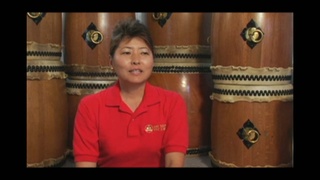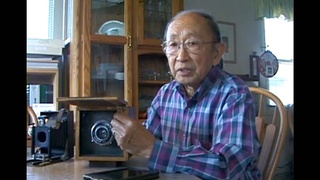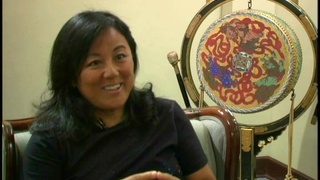Interviews
Going back to Hawaii
I was born in Kumamoto. Among the nine siblings, I was the only one. I mean, eight siblings, I was the only one to be born in Japan. And so, three months after I was born, my father felt that there's no place like Hawaii to bring up his children and to educate them. And I think the children missed, you know, the Hawaiian lifestyle. And because my dad went home with lot of gold and money, the relatives kept on borrowing money from him. And so he thought before he ran out of money, you know, he'd rather come back to Hawaii.
So my life started out quite unusual. We settled back on that old sugar company Camp One was called Japanese camp. And so it was right about the sugar mill, it was the hub of plantation life. All the action took place there and that's the reason why every morning, I watched the workers walk down the dirt road right in the back of our house or front of the house. And I kind of recognized the different types of clothing that they wore depending on their work.
Date: February 19, 2004
Location: Hawai'i, US
Interviewer: Lisa Itagaki, Krissy Kim
Contributed by: Watase Media Arts Center, Japanese American National Museum.
Explore More Videos

The multicultural perspective
(b.1960) Third-generation taiko drummer, leader of Maui Taiko

Mothers and Taiko
(b.1960) Third-generation taiko drummer, leader of Maui Taiko



His father didn't spend too much time with the family
(1924-2016) Photographer and businessman.


Parent's immigration to Peru
(b. 1942) Japanese Peruvian incarcerated in Crystal City

The Nikkei Integration into society (Spanish)
(b. 1962) Peruvian Poet, Okinawan descendant



Japanese immigration with an Okinawan face (Spanish)
(b. 1962) Peruvian Poet, Okinawan descendant

Japanese language education for children
Professor of Law, University of Sao Paulo, Lawyer, Translator (b. 1948)

Didn’t speak Japanese until moving to Japan
(1928 - 2008) Drafted into both the Japanese Imperial Army and the U.S. Army.

Speaking about his wife
(1928 - 2008) Drafted into both the Japanese Imperial Army and the U.S. Army.

Growing up with both Japanese and American influences
(1919-2020) Member of the 1800th Engineering Battalion. Promoted Japan-U.S. trade while working for Honda's export division.
